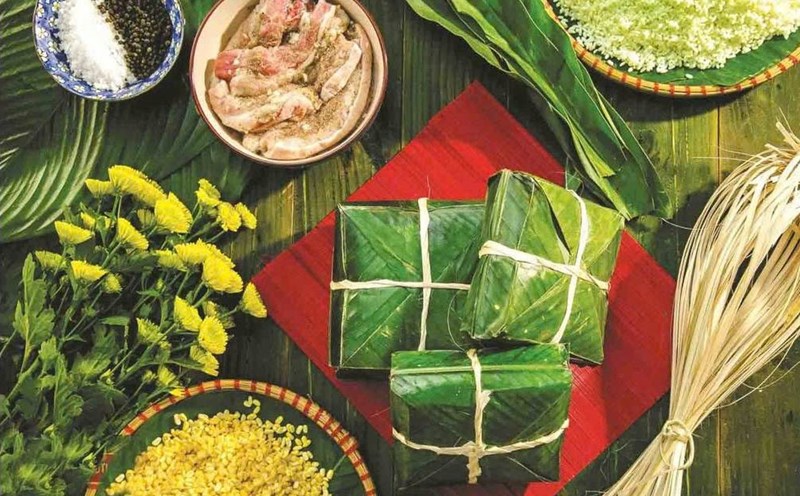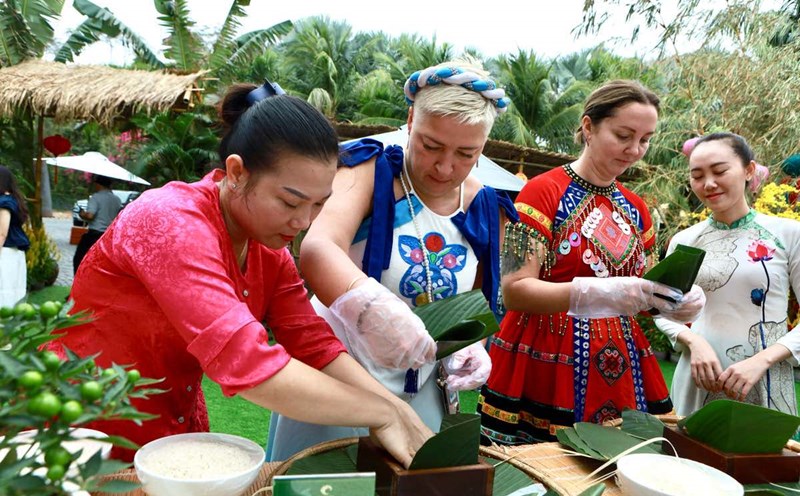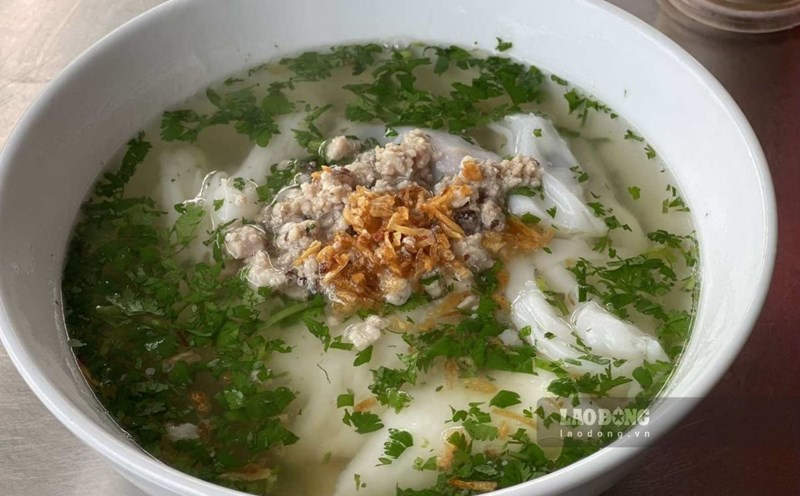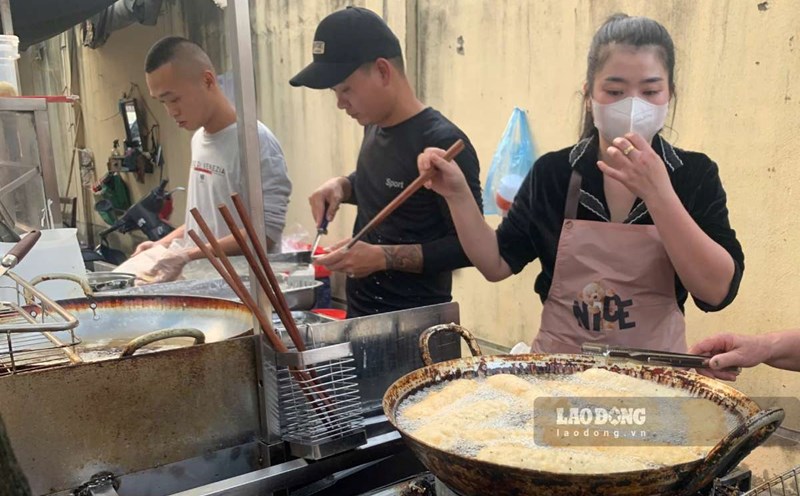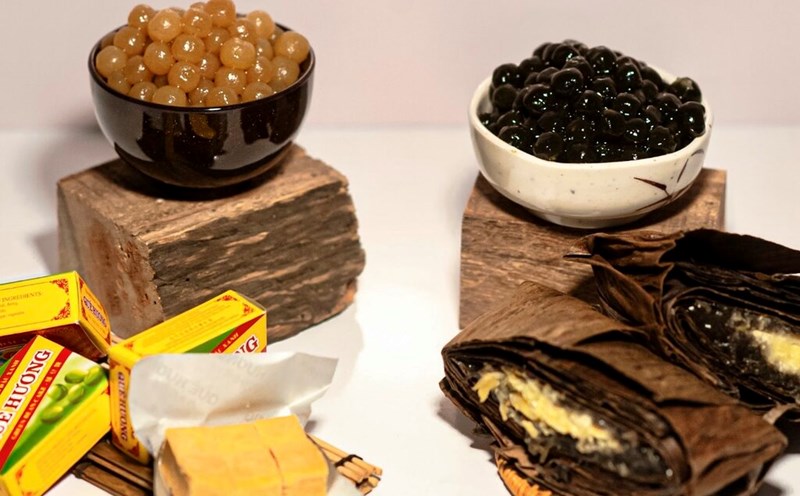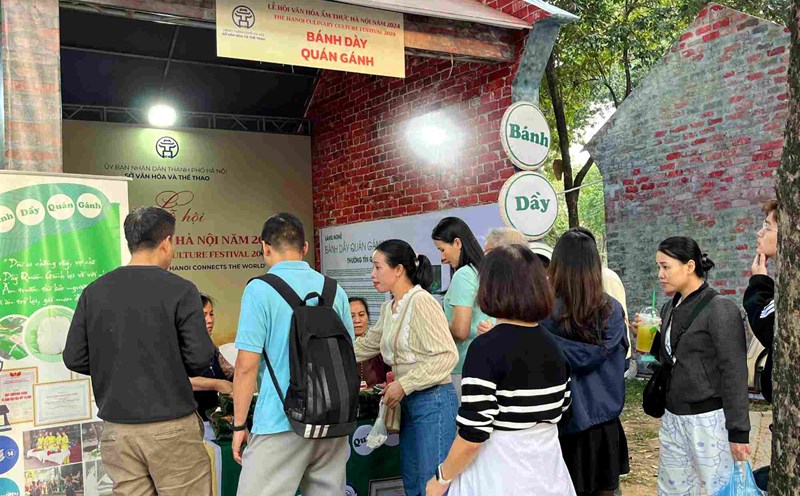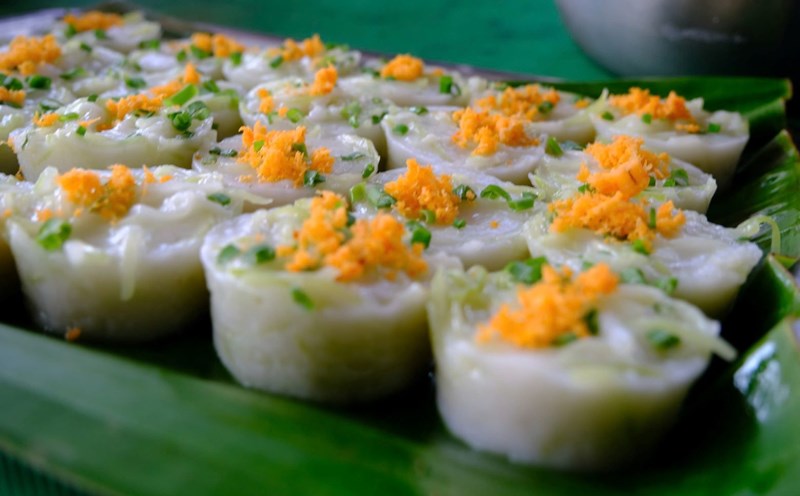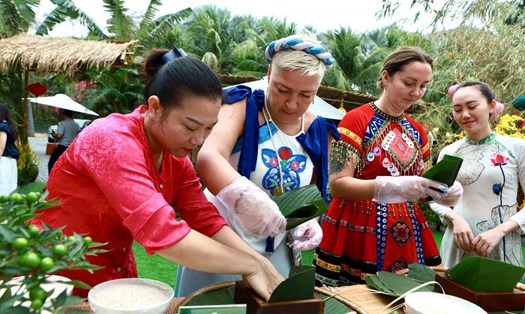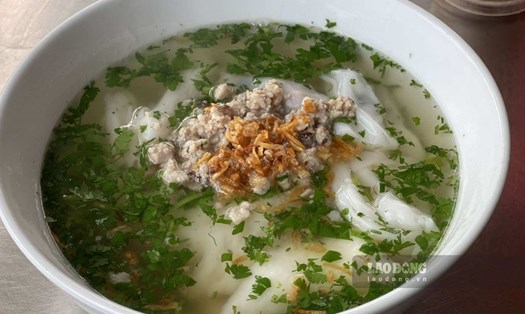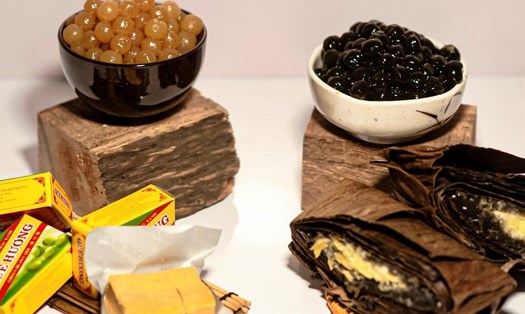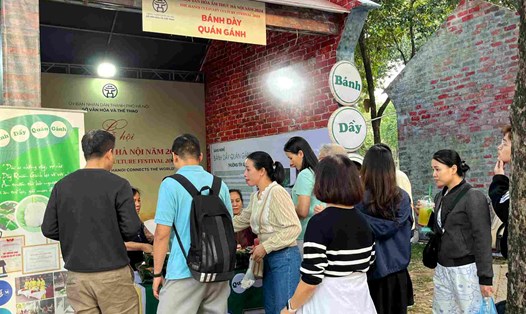Hearing the strange name of this rustic hometown gift, tourists who have the opportunity to visit the village during holidays and Tet cannot help but be curious and want to enjoy it.
Giang Xa village is an ancient village with a long history, considered the “second homeland” of King Ly Nam De. Stories about the king not only exist in the sacred ancient temple in the middle of the village, but are also passed down through the specialty banh chung that the people preserve to this day.
In the past, to show their respect, Giang Xa villagers created banh chung to offer to the king. In particular, when Giang Xa girls got married, they would challenge the groom's family with a tray of banh chung. The ancients also said, "Even if the husband is bored or the wife is displeased, eating a piece of banh chung will bring them back together."
Passing through the Giang Xa village gate, I asked the women selling drinks along the road and was told that the famous banh chung maker in the village was artisan Do Phu Thu. He has passed away, but his children are still taking over the profession. Following the enthusiastic guidance of the people, I went through all the small alleys, small paths, and houses close together on the road to reach the house of Mr. Duong - Thu's son.
Luckily, when I arrived, Mrs. Nguyen Thi Dieu (60 years old, Hoai Duc) - Mr. Duong's wife was busy making a batch of banh bac to deliver to the order. Mrs. Dieu said while working: "You can understand it as frying, frying, and also the act of flipping the cake, spreading it evenly on the pan to cook it."
“The hardest part of making cakes is the mixing stage. If you’re not careful, you can easily burn your hands, and the dough will be ruined,” Ms. Dieu said as she continuously used her hands wrapped in cloth to directly flip, rotate, and press the dough evenly on the blazing hot pan.
The ingredients for making banh chung are not complicated, but must be carefully selected. The rice used to make the cake crust must be yellow sticky rice, with plump, round grains. In the summer, soak the rice for about two hours, in the winter for about three hours to let the rice expand. In addition, there are gac sticky rice, lard, sesame, green beans and sugar.
After soaking for enough time, the sticky rice will be ground and compressed into dry powder. The resulting white, smooth dough is divided into two parts, one half is left as is, the other half is kneaded with gac fruit to create a beautiful pink color. The green beans used for the filling are cleaned of their shells, steamed and mixed with sugar until smooth and sticky, similar to the way sweet soup is made.
“Lard and heat greatly determine the softness and aroma of the cake,” Ms. Dieu shared. Therefore, the baking stage cannot use cooking oil but must use lard. The heat must also be just enough for the cake dough to cook evenly. To know when the cake is done, the baker does not need to look at the clock but relies entirely on the feeling of the hands.
The cooked dough will be left on a tray to cool down, then rolled out thinly and arranged into beautiful alternating white and red layers. A layer of roasted sesame, then red cake crust, then white cake crust. Finally, the bean filling has been shaped into long sticks.
The banh chung must be rolled very skillfully, tightly by hand so that the white and red layers are equally thin, tightly embracing the bean filling. A “tay” of banh chung is wrapped tightly in banana leaves like a ham hock, left to ferment for about two hours before being cut into 2-3cm slices. With each cut of the knife, each slice of cake looks like a beautiful blooming flower under the green banana leaf. Each flower has red and white petals alternating, embracing the bright yellow stamen.
From the rice grain “blossoming” into a flower, banh chung attracts diners with its rustic, familiar flavor. The soft, chewy, fragrant gac fruit shell, mixed with the sweet, nutty bean filling, makes the taster remember their childhood, eagerly waiting for their grandmother or mother to come home from the market to give them a piece of rustic cake.
Every year, Giang Xa holds a festival on the 12th day of the first lunar month (the coronation day of the Supreme King Ly Nam De) to commemorate the king's merits, blending in with the Spring atmosphere on every corner of Vietnam. In the jubilant, bustling joy, banh chung - "the flowers" of Giang Xa village appear on the offering tray, as if adding new vitality to the small village at the beginning of Spring.
(Posted on the special edition of Labor Weekend Spring At Ty)

